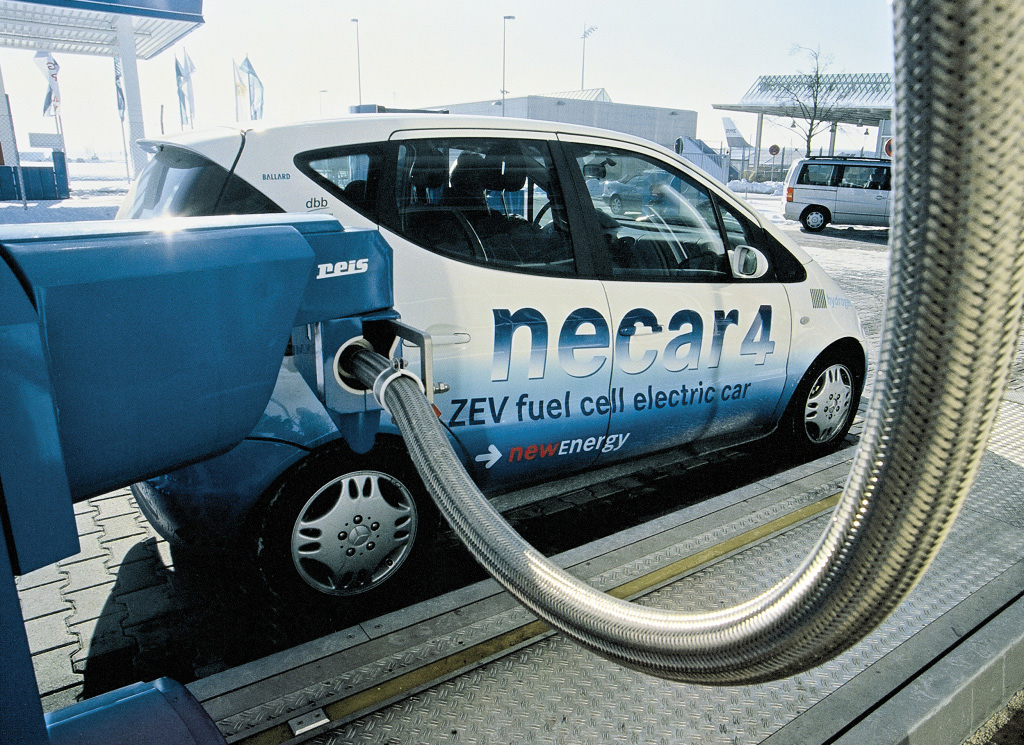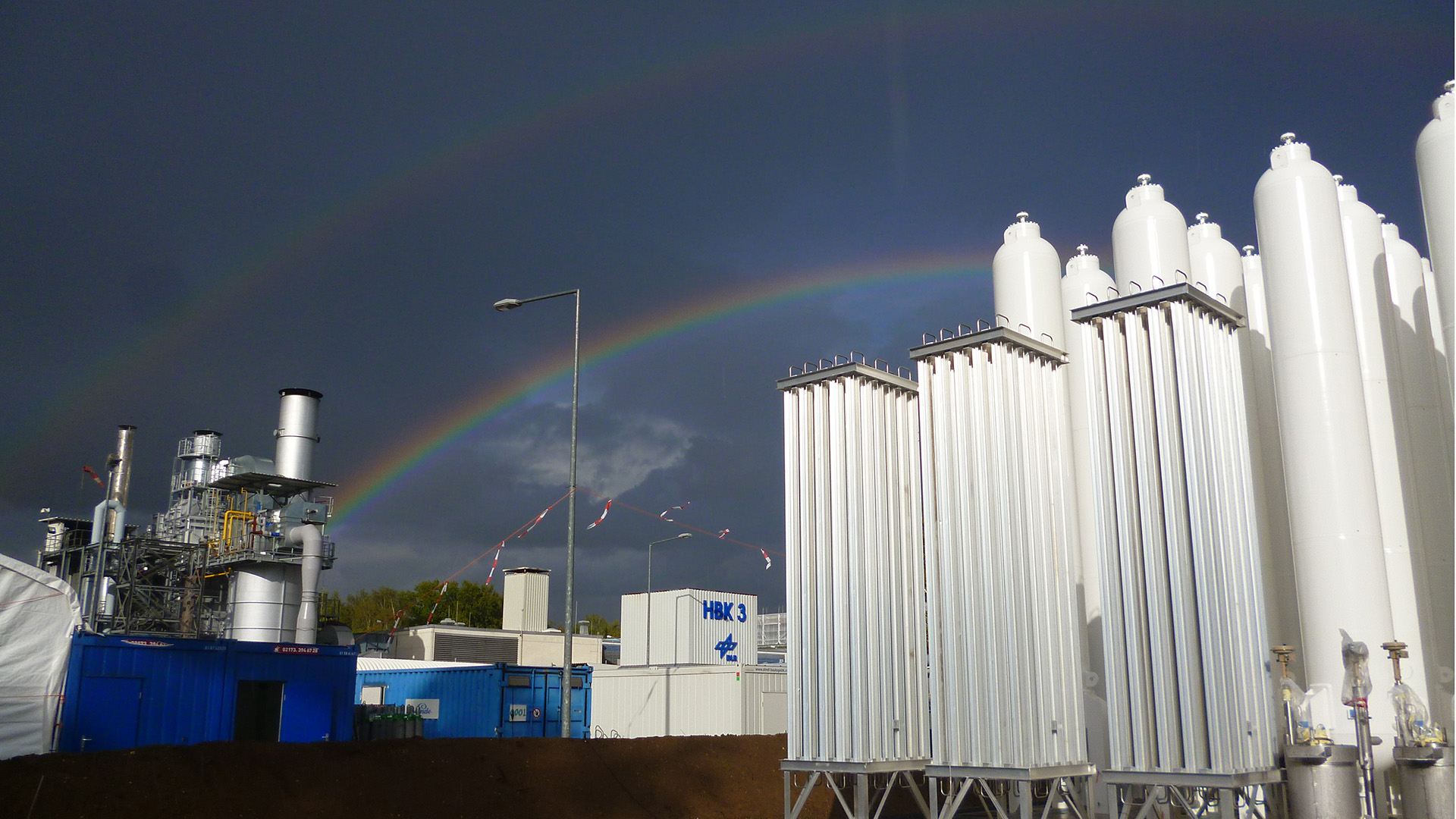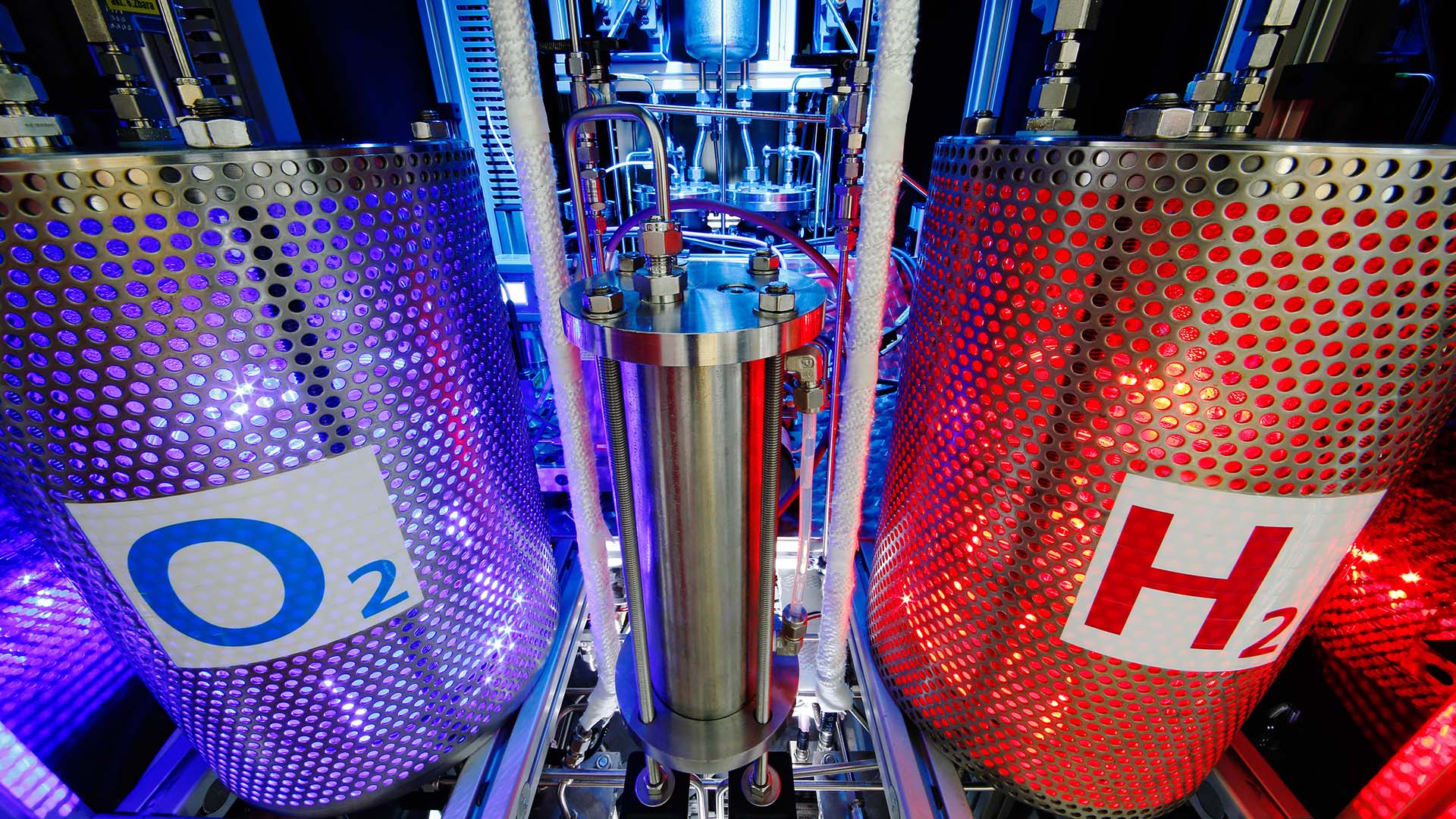HYDROGEN: A Credible Answer to Global Energy Challenges
The Paris COP21 climate summit placed climate change at the top of the international political and economic agenda. Hydrogen and fuel are part of the solution to the climate crisis and may become a cornerstone of tomorrow’s energy and transport systems. Find out why.
For decades, key industries, such as oil refining, ammonia production, food processing, glass manufacturing, metal production and electronics, have been using hydrogen. The market for hydrogen is well established and growing. According to Markets and Markets, the current market for industry applications is expected to grow from $118 billion now to $152 billion by 2021.
Over the past decades, hydrogen’s economic and environment benefits have led many to promote the development of hydrogen as an energy carrier. Combined with oxygen, in fuel cells (electro-chemical energy conversion devices) hydrogen can produce zero-emission electricity and heat and no by-product other than water. Hydrogen is a clean, abundant and efficient alternative to conventional fossil fuels.
Hydrogen is a clean, abundant and efficient alternative to conventional fossil fuels.
Hydrogen can be used to store energy from intermittent renewable energy sources, through water electrolysis – the decomposition of water into hydrogen and oxygen through electricity generated by renewables. If the electricity consumed to produce hydrogen is decarbonized, hydrogen becomes a fully-decarbonized energy carrier. Fuel cells are a highly efficient power production technology. Fuel cells’ applications are wide-ranging and cover many different fields, from stationary power and heat production to automotive power trains, and as a power supply for mobile electronic devices.
The passenger car remains one of the most attractive fuel cell applications although it is the most challenging from a technological and economic standpoint. Hydrogen and fuel cells vehicles provide inherent value as they directly address the limitations of battery-powered electric vehicles (BEVs) such as their relatively limited driving ranges, and long recharging times. The performance and user experience of fuel cell vehicles (FCVs) is comparable to conventional vehicles. FCVs offer driving ranges beyond 700 km, 3 minutes refuelling times, high efficiency and zero emissions. FCV are therefore an attractive sustainable transport alternative, especially for passenger cars, public transport and heavy transport.
The market for hydrogen is well established and growing.
Integrating renewables into power systems
The use of hydrogen as a fuel for power generation or transport has faced a number of challenges. Hydrogen is not a primary energy source naturally available. It is an energy carrier, like electricity, and needs an external source of primary energy to separate the hydrogen atoms from other atoms in complex hydrogen-rich molecules, such as water, hydrocarbons or biomass.

Today, over 95% of all hydrogen is generated from fossil fuels, in CO2-intensive processes. Due to the low cost and easy availability of natural gas, Steam Methane Reforming (SMR) is globally the dominant production method, ahead of partial oxidation of petroleum oil and coal steam gasification. However, current SMR technology generates around 10 tons of CO2 per ton of hydrogen. If hydrogen is to become a leader in the low-carbon energy system, then hydrogen production with CO2 emissions will need to be drastically cut. For hydrogen and its applications to be a climate-friendly alternative to fossil fuels, it is necessary to ensure emission reductions and to minimize the impact on natural resources in the whole life cycle.
HINICIO’s research shows that drastic emission reductions are clearly possible, and that alternative production technologies are already starting to emerge. Water electrolysis offers a very promising path for producing “green” hydrogen – hydrogen produced by renewable energy with low carbon emissions – while facilitating the integration of renewables in the power system. Today’s systems were not designed to cope with high levels of variable power generation. The system integration of wind and solar energy will therefore become increasingly challenging. No one wants a flickering TV set because of wind speed variation…
Producing hydrogen by water electrolysis is one solution to this challenge. Intermittent electricity can be converted into hydrogen and used, for instance, in the transport sector at another point in time and space. HINICIO’s study commissioned by the TUCK Foundation and co-financed by Total and ENGIE has shown that while both the technology and economics still need to be optimized, water electrolysis may – within the next 10 years – become one of the preferred technological options for managing renewables. Key to enabling such a development, the creation of a certification scheme for “green” or low carbon hydrogen will be necessary to give a monetary value to the hydrogen “green premium”, that is to say the produced environmental benefits. HINICIO is coordinating an innovative European project called CertifHy which specifically aims at developing such a scheme at the European level, in collaboration with leading European energy players, issuing bodies, certifiers and regulators. We are convinced that such initiatives are key to develop a green hydrogen market in Europe.
Overcoming the chicken-and-egg dilemma
Once produced, hydrogen has to be delivered to the point of use, especially to fuel cell vehicles. As conventional vehicles rely on a network of gas stations, so the deployment of hydrogen mobility will require the coordinated deployment of a sufficient number of hydrogen refuelling stations so drivers to be able to fill their tank whenever and wherever needed. Hydrogen for the supply of services stations, can either be produced on-site (for instance with an electrolyser installed next to the refuelling station) or in more centralized production facilities.
The hydrogen sector has been confronted with a chicken-and-egg dilemma for many years. On the one hand, car manufacturers are reluctant to invest in the manufacturing of fuel cell cars without existing hydrogen refuelling infrastructure. Clearly, no consumers would purchase such a car without the ability to refuel it. On the other, energy and industrial gas companies are not prepared to roll-out the necessary hydrogen infrastructure before hydrogen cars hit the road as they would face a “death valley” of several years before seeing any profit.

Costs are indeed significant and an EU coalition report published a few years ago estimates a 2 billion Euro annual investment needed in Europe to build the infrastructure required for 25% market share of fuel cell vehicles. While, at first glance, such an amount may appear daunting, this sum has to be compared with annual investments in other infrastructure sectors (oil and gas, electricity, telecommunications, transport…) which equal much bigger numbers, to the tune of several tens of billions of euros.
The solution lies in a concerted and coordinated approach between infrastructure players, car manufacturers and public authorities at global and local levels to ensure that hydrogen production, delivery and distribution capabilities are deployed in a synchronized manner with sales of fuel cell vehicles, and risks taken by early adopters are properly managed and rewarded. The H2Mobility initiative in Germany, as well as similar developments in Japan and California are good examples of how government and private sector cooperation can come together to overcome such chicken-and-egg challenges. Several hundreds of hydrogen refuelling stations are currently operating worldwide and major car makers are stepping up to the plate one after another (Toyota, Honda, Hyundai…). Current developments in Germany, Japan and California demonstrate that the infrastructural barrier is slowly but surely being overcome by the industry. However, a clearer and ambitious strategy from leading European car manufacturers is required for the market to take off.
Reducing costs, increasing production
While costs have been reduced significantly and technological performance has improved in the last decade, it is also fair to say that certain technical and economic hurdles still remain along the hydrogen value chain, from hydrogen production down to end-use applications.
For instance, at the production level, the costs of electrolysers still need to come down by a factor of 2-3 and their durability and tolerance vis-à-vis input variability must improve. This will be necessary to achieve a reasonable target price for the hydrogen at the pump, usually set at around 10 euros per kilogram, which is the benchmark value to be on par with gasoline on a per kilometre basis (one kilogram of hydrogen allows users to drive around about 100 kilometres).

Photo: DLR
At the fuel cell vehicle level, various barriers are worth mentioning including reducing the use of expensive precious metals such as platinum, lifetime and reliability improvements, resistance to corrosion, better integration, heat management and overall system simplification. Unsurprisingly, fuel cell costs are also still very high mostly due to low production volumes. However, HINICIO’s study for a world-leading electricity utility has shown that fuel cell vehicles will achieve cost parity with conventional vehicles as soon as mass production begins. For the time being, car manufacturers appear to be targeting high-end segments with high customer expectations, for which superior performance, range and refuelling experience could offset some of the price differential.
Confronting climate change
Although many challenges remain to be addressed, the opportunities offered by hydrogen and fuel cells technologies to decarbonize the transport sector while facilitating the integration of renewables are in line with the high level policy goals set during COP21 to curb global greenhouse gas emissions.
Whether energy utilities, gas companies, OEMs, technology providers, entrepreneurs, cleantech investors, large energy users and policy makers, stakeholders around the world should thoroughly analyze the positive or negative effects of hydrogen on their activities, business models, product portfolios and opportunities to innovate and build strategies to actively overcome competitive threats or embrace this substantial disruptive technology opportunity.
Hydrogen can be a cornerstone of tomorrow’s low carbon energy system
The emergence of hydrogen as an energy carrier is a major growth opportunity as its economic and environmental impact would be a game-changer. From an environmental standpoint, hydrogen can be a cornerstone of tomorrow’s low carbon energy system. Economically speaking, we are looking at a multi-billion euro sector in years and decades to come. Hydrogen is just too big to miss!
Interview with Patrick Maio, Founder & CEO of HINICIO
What are the biggest challenges for the hydrogen industry?
The hydrogen industry’s major challenge is to align 3 planets. It is essential to bring economy, technology and policy on the same line. For hydrogen to become an even wider reality in our everyday lives, we need technological solutions and value propositions which are economically attractive and supported by the right regulatory frameworks.
What are the steps to align these 3 planets?
From an economic and technical standpoint, we are close to market-ready solutions. Some are already market ready. However, policies and regulations have, as yet, insufficiently encouraged hydrogen and fuel cell technologies. For example, there are no attractive subsidy schemes incentivizing people to acquire fuel cell vehicles or to use hydrogen as an alternative to store renewable energies. Also, adequate financing instruments which would mitigate and reward the financial risks taken by early adopters investing in hydrogen refueling infrastructure have yet to be developed.
How does hydrogen contribute to climate solutions?
Hydrogen-related technologies have a lot to offer in terms of emissions reduction, greenhouse gases at the global level, as well as local urban emissions which can be very harmful for public health. Hydrogen fuel cell vehicles perform very well on both aspects, beyond offering superior customer functionality (very fast refueling time and longer distance autonomy). Rapidly increasing the penetration of renewable energy by mitigating intermittency with hydrogen storage is already an option and would further leverage its greenhouse gas emission reduction potential. Beyond fighting climate change, solutions such as hydrogen are essential to produce and use our energy locally, to mitigate geopolitical risk exposures, ensure our energy security and help rethink our global growth agenda.
How will hydrogen be part of climate solutions in the mid- and long-term?
The greener the hydrogen we use – whether for traditional industrial uses, mobility or stationary uses – the more sustainable the hydrogen pathway will be. Green hydrogen is essential for mobility and energy applications. Hydrogen will further help these sectors to fight climate change in the future. We are currently working on a European green hydrogen certification scheme, which will be a key market-enabler in the near future.
What has to be done now to enable a future with sustainably-produced hydrogen?
Limited quantities of “premium” green hydrogen are produced now and only in a few locations, thus lacking economic and market attractivity. Therefore, it is important to be able to sell green hydrogen everywhere in Europe independently from its production site. Similar to having renewable electricity certificates, we need green hydrogen certificates to boost production and trading of green hydrogen between producers and consumers which are not necessarily located near one another.
Green hydrogen is essential for mobility and energy applications.
How will a future of sustainably-produced hydrogen look like?
It will be a future I would like to live in today: greener, peaceful and interconnected.
HINICIO is an international strategy consultancy specialized in sustainable energy and transport. Since 2007, HINICIO has been developing a unique competence center in the field of hydrogen energy within Europe. HINICIO brings together a team of high-level experts with multi-disciplinary backgrounds: engineers, MBAs, former industry executives, economists and energy policy experts to advise large corporations, energy utilities, public authorities, as well as startup companies and corporate investors on new opportunities arising in the sustainable energy and transport sector.